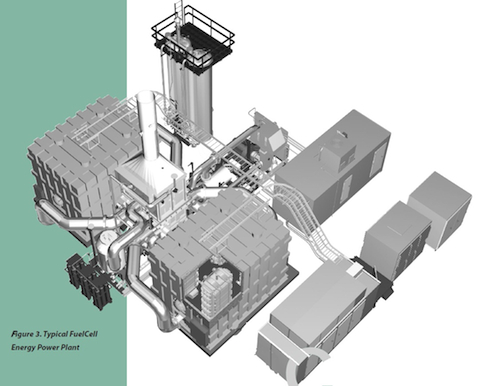A manufacturer of clean, efficient and reliable power plants using renewable and other fuels for commercial, industrial, government, and utility customers says Southern California Edison Company (SCE) has ordered a 1.4 MW DFC1500 fuel cell power plant to install as a utility-owned fuel cell on the campus of California State University, San Bernardino. The ultra-clean electricity generated by the power plant will interconnect into the existing SCE distribution grid. The distributed generation attribute of fuel cells enables SCE to add power generating capacity at the point of use without a commensurate investment in the transmission and distribution grid.

DFC fuel cells are generating power at over 50 locations worldwide. The Company's power plants have generated over 650 million kWh of power using a variety of fuels including renewable wastewater gas, biogas from beer and food processing, as well as natural gas and other hydrocarbon fuels.
Distributed generation provides power at a point of use, lessening reliance on the electrical-transmission grid and represents incremental capacity that avoids or reduces investment in the transmission and distribution system. Actions taken by the California Public Utilities Commission (CPUC) to promote the adoption of clean distributed generation power sources are intended to improve power quality and reliability, increase energy efficiency and enhance energy independence. In the spring of 2010, the CPUC authorized Southern California Edison and another California utility to pursue utility owned fuel cell installations at California universities, recognizing fuel cells as preferred resources due to clean fossil fuel generation and distributed generation.
This DFC1500 installation will use natural gas to generate clean electricity using an electrochemical reaction. The absence of combustion nearly eliminates pollutants such as NOx, SOx or particulate matter. Additionally, the fuel cell is highly efficient, generating more power from a given unit of fuel and lower greenhouse gas emissions compared to combustion-based power sources of similar size.
The Direct FuelCell (DFC) power plant will use heat from power generation in a Combined Heat and Power (CHP) configuration that will connect to the campus hot-water supply, supplementing an existing combustion-based boiler. FuelCell Energy says this CHP configuration will assist Cal State San Bernardino in lessening its reliance on a less efficient boiler. CHP applications in general improve energy efficiency, leading to lower costs and a reduction of emissions, enhance energy security, and increase resiliency of the energy infrastructure by reducing the need for power to generate heat, easing congestion of the transmission grid. In a CHP configuration, DFC power plants can hit efficiencies to 90%, depending on the application.
FuelCell Energy Inc.
www.fce.com
Filed Under: News




